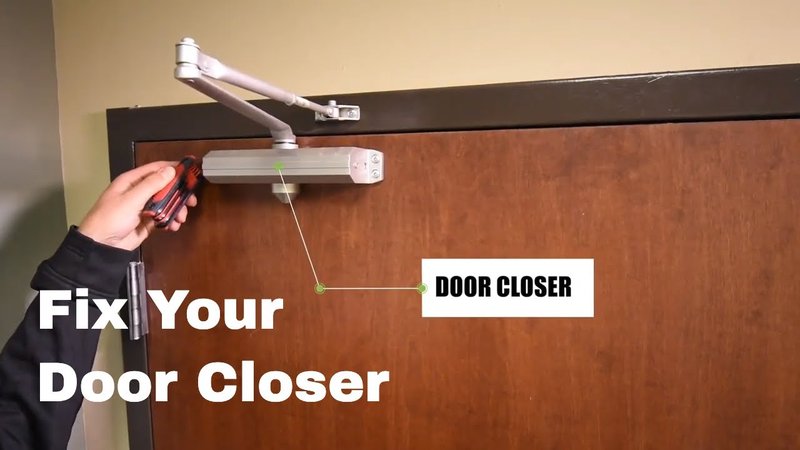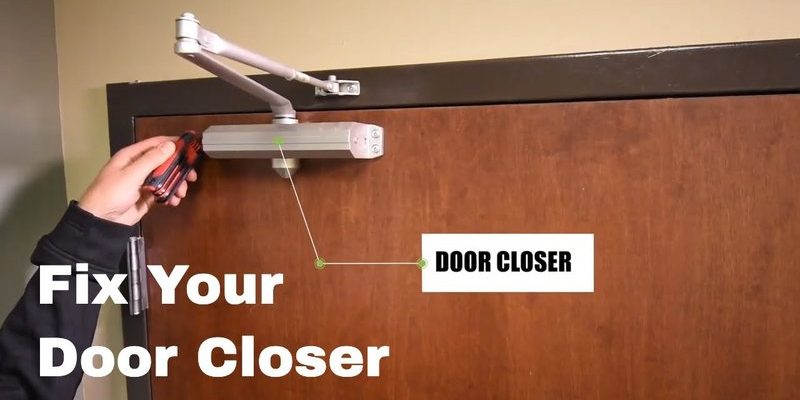
A door latch that needs a good thud to close is more common than you might think. Often, it’s not just a quirky feature but a sign that something needs attention. Whether we’re talking about a simple interior door or a heavy exterior entrance, understanding why this happens is vital. You might be wondering if it’s a hardware issue or something to do with the frame. Let’s dive into this intriguing topic, and by the end, you’ll have a clearer picture of why your door is behaving this way.
How Door Latches Work
At its core, a door latch is a mechanism that keeps your door securely closed. Think of it as the gatekeeper of your home. When you turn the doorknob or lever, a metal bolt retracts and allows the door to open. However, once you close that door, the bolt should slide into a slot in the door frame, holding it firmly in place. If this mechanism isn’t working smoothly, you might find yourself slamming the door just to hear that satisfying *click*.
Why does this happen? Sometimes, it’s just a matter of alignment. If the strike plate (the metal piece on the door frame that the latch fits into) is misaligned, the bolt won’t slide in easily, and you’ll need extra force to make sure it catches. Just like when you try to fit a square peg into a round hole, it’s a recipe for frustration!
Identifying Misalignment Issues
Misalignment can be one of the primary culprits behind a door latch requiring a slam. When a door is hung improperly, or if the house settles over time, the door frame can shift. Here’s how to identify if misalignment is your issue:
- Visual Inspection: Look at the space between the door and frame. If it seems uneven on one side, that’s a red flag.
- Listen For Gaps: Close the door slowly. If you hear scraping or see gaps in the seal, it’s a clear sign of misalignment.
- Functionality Check: Try the latch a few times. If it doesn’t catch without a good push, you might need to realign it.
If you discover misalignment, you can often fix it with a simple adjustment of the hinges. Loosening the screws and repositioning the door might do the trick.
Worn-Out Hardware
Another reason for a door latch requiring a slam could be worn-out hardware. Over time, door latches can become rusty, corroded, or simply worn down from daily use. Think about all the times you’ve turned that knob or pushed against that door. It’s like doing a workout over years!
When the latch itself is compromised, it may not engage properly with the strike plate. Here’s how to diagnose if your hardware is the issue:
- Visual Wear: Check for scratches, rust, or corrosion on the latch and strike plate.
- Test Movement: Is the latch sticking or hard to push in? If so, it might need lubrication or replacement.
- Inspect the Screws: Are they loose? Tightening them may help the latch align better.
If you find that your hardware is worn out, it might be time for a replacement. This could involve just swapping out the latch or the entire doorknob assembly.
Weather Impact on Door Performance
Do you live in an area with extreme weather? Rain, humidity, and temperature changes can affect your door’s performance. When wood absorbs moisture, it can swell, causing the door to become misaligned. It’s like putting on a pair of jeans after washing them—they might fit a bit differently until you wear them a few times.
How can you tell if weather is impacting your door? Here are some indicators:
- Seasonal Effects: Does the problem worsen during the rainy season or colder months?
- Temperature Fluctuations: Notice any changes in how easily the door closes after temperature changes?
- Physical Changes: Is the door physically warped or swollen on humid days?
If weather is the problem, you can consider sealing your door or investing in weather stripping to minimize the effects of heat and moisture.
Improper Installation
If you’ve recently had a door installed, improper installation can also contribute to the latching issue. A poorly installed door can lead to alignment problems from the start. Think about it as a new piece of furniture: if it wobbles, it might not have been put together right.
To check for installation issues:
- Hinge Placement: Are the hinges evenly spaced? If they’re not, this could cause misalignment.
- Frame Check: Is the door frame square? Use a level to see if it’s even.
- Latch Alignment: Is the latch lining up with the strike plate when the door is closed?
If you notice any installation-related problems, you may need to consult a professional. They can help ensure everything is put together correctly.
DIY Fixes and Solutions
Before you consider calling a handyman, there are several DIY fixes you can try. Sometimes, small adjustments can make a big difference. Here are some steps you can take:
1. Tighten the Hinges: Loose hinges are a common problem. Use a screwdriver to tighten them up and see if that helps.
2. Adjust the Strike Plate: If the latch isn’t catching, try adjusting the strike plate position. Loosen the screws and gently move it until it aligns properly.
3. Lubricate Moving Parts: A little lubricant can go a long way. Spray or apply some lubricant on the latch and the hinges to help them operate smoothly.
4. Check Door Alignment: If none of this helps, it might be worth checking the door itself. If it’s too tight in the frame, sanding down the edges may help.
DIY fixes can save you a lot of hassle, and who doesn’t love a little home improvement?
When to Call for Professional Help
Sometimes, despite your best efforts, the problem persists. If you find yourself frustrated and tired of slamming that door, it might be time to call a professional. Here are some signs you should reach out for help:
- Complex Issues: If the problem seems complicated or beyond a simple fix, a professional can assess the situation.
- Structural Problems: If your door frame is warped or compromised, it’s best to get a pro involved.
- Repeated Issues: If you’ve attempted fixes several times but the problem keeps coming back, a professional could provide a long-term solution.
A little expert help can prevent a small annoyance from turning into a bigger issue down the road.
A door latch that requires a slam to close can be more than just an annoyance; it might indicate several underlying issues, from misalignment to wear and tear. Understanding the mechanics behind this problem empowers you to take action—whether that means tightening screws, realigning the latch, or even replacing hardware.
As you consider solutions, remember the importance of proper installation and maintenance. If the simple fixes don’t cut it, don’t hesitate to call in a pro. After all, a smoothly closing door can add a sense of comfort and security to your home. Now, next time you hear that *click*, you’ll know just what it takes to keep your door working like a charm!
